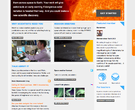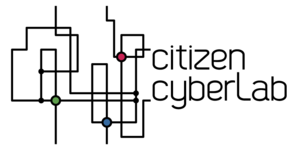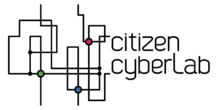Solar Stormwatch: Difference between revisions
Jump to navigation
Jump to search
Himmelattack (talk | contribs) (Created page with "{{Citizen science project |field_project_name=Solar Stormwatch |field_project_access_URL=http://www.solarstormwatch.com/ |field_screenshot=Capture d’écran 2013-11-14 à 14....") |
Himmelattack (talk | contribs) No edit summary |
||
| (One intermediate revision by the same user not shown) | |||
| Line 14: | Line 14: | ||
We want to really start building a space weather forecast from this. Just studying one event doesn't tell you very much about the Sun's behavior in general. What we want to know about is, okay, we understand maybe in detail one event, but what does it do for the next 200 times? Is it the same? Does it change? Does it get progressively more active as the sun gets active? Do they get progressively weaker? Do they get faster? Do they get slower? Do they go off in a particular direction? | We want to really start building a space weather forecast from this. Just studying one event doesn't tell you very much about the Sun's behavior in general. What we want to know about is, okay, we understand maybe in detail one event, but what does it do for the next 200 times? Is it the same? Does it change? Does it get progressively more active as the sun gets active? Do they get progressively weaker? Do they get faster? Do they get slower? Do they go off in a particular direction? | ||
All these questions need you to have lots of numbers, and we need as many numbers as we possibly can. | All these questions need you to have lots of numbers, and we need as many numbers as we possibly can. | ||
|field_team_leadermm=Chris Davis | |field_team_leadermm=Chris Davis | ||
|field_main_institution=STFC Rutherford Appleton Laboratory | |field_main_institution=STFC Rutherford Appleton Laboratory | ||
| Line 20: | Line 19: | ||
|field_team_link=http://www.solarstormwatch.com/mission_briefing | |field_team_link=http://www.solarstormwatch.com/mission_briefing | ||
|field_contact_person_URLs=http://www.solarstormwatch.com/talk_about_it | |field_contact_person_URLs=http://www.solarstormwatch.com/talk_about_it | ||
|field_team_location=Royal Observatory Greenwich | |||
|field_volonteer_computing=no | |field_volonteer_computing=no | ||
|field_volonteer_thinking=no | |field_volonteer_thinking=no | ||
|field_volonteer_sensing=no | |field_volonteer_sensing=no | ||
|field_volonteer_gaming=no | |field_volonteer_gaming=no | ||
|field_tutorials_documentation= | |field_data_types_to_manipulate=pictures | ||
|field_peer_to_peer_guidance= | |field_participant_contribution_type=data analysis, data interpretation | ||
|field_training_sequence= | |field_gaming_elements=achievements, reward batches | ||
|field_individual_performance_feedback= | |field_interaction_with_objects=Play video, mark beginning and ending of storms, mark extent of storm across camera. | ||
|field_interface_attractivity=somewhat cool/attractive | |||
|field_interface_usability=rather easy to use | |||
|field_tutorials_documentation=yes | |||
|field_peer_to_peer_guidance=no | |||
|field_training_sequence=no | |||
|field_individual_performance_feedback=yes | |||
|field_collective_performance_feedback=N/A | |field_collective_performance_feedback=N/A | ||
|field_research_progress_feedback=N/A | |field_research_progress_feedback=N/A | ||
|field_member_profiles= | |field_member_profiles=minimal | ||
|field_community_tools=blog, forum | |||
|field_has_community_manager=N/A | |field_has_community_manager=N/A | ||
|field_project_news_updates=N/A | |field_project_news_updates=N/A | ||
|field_socialsoftware_sites= | |field_socialsoftware_sites=Twitter, other | ||
|field_team_work=N/A | |field_team_work=N/A | ||
|field_last_edition=2013/11/14 | |field_last_edition=2013/11/14 | ||
Latest revision as of 13:42, 15 November 2013
| BIBLIOGRAPHY |



